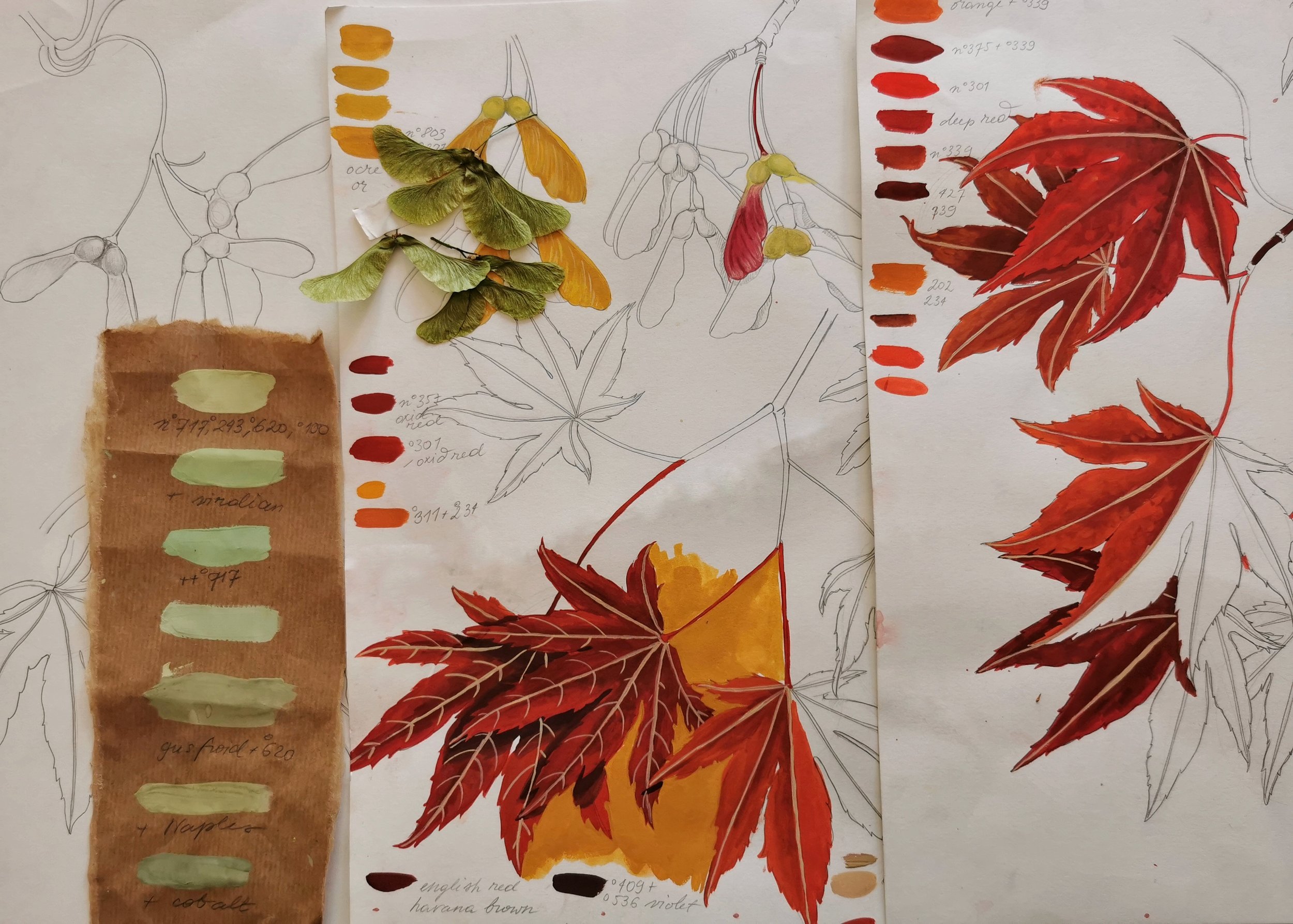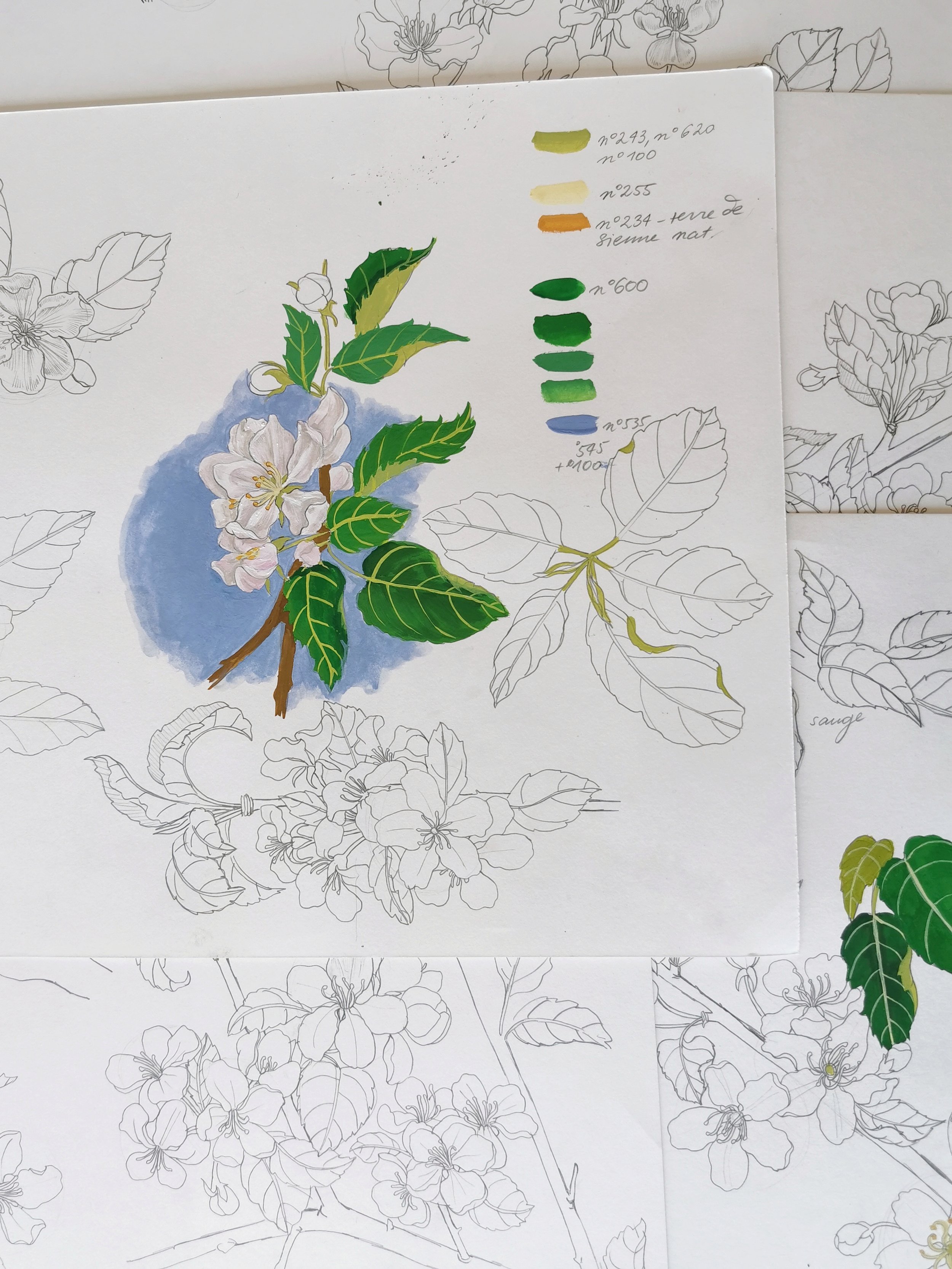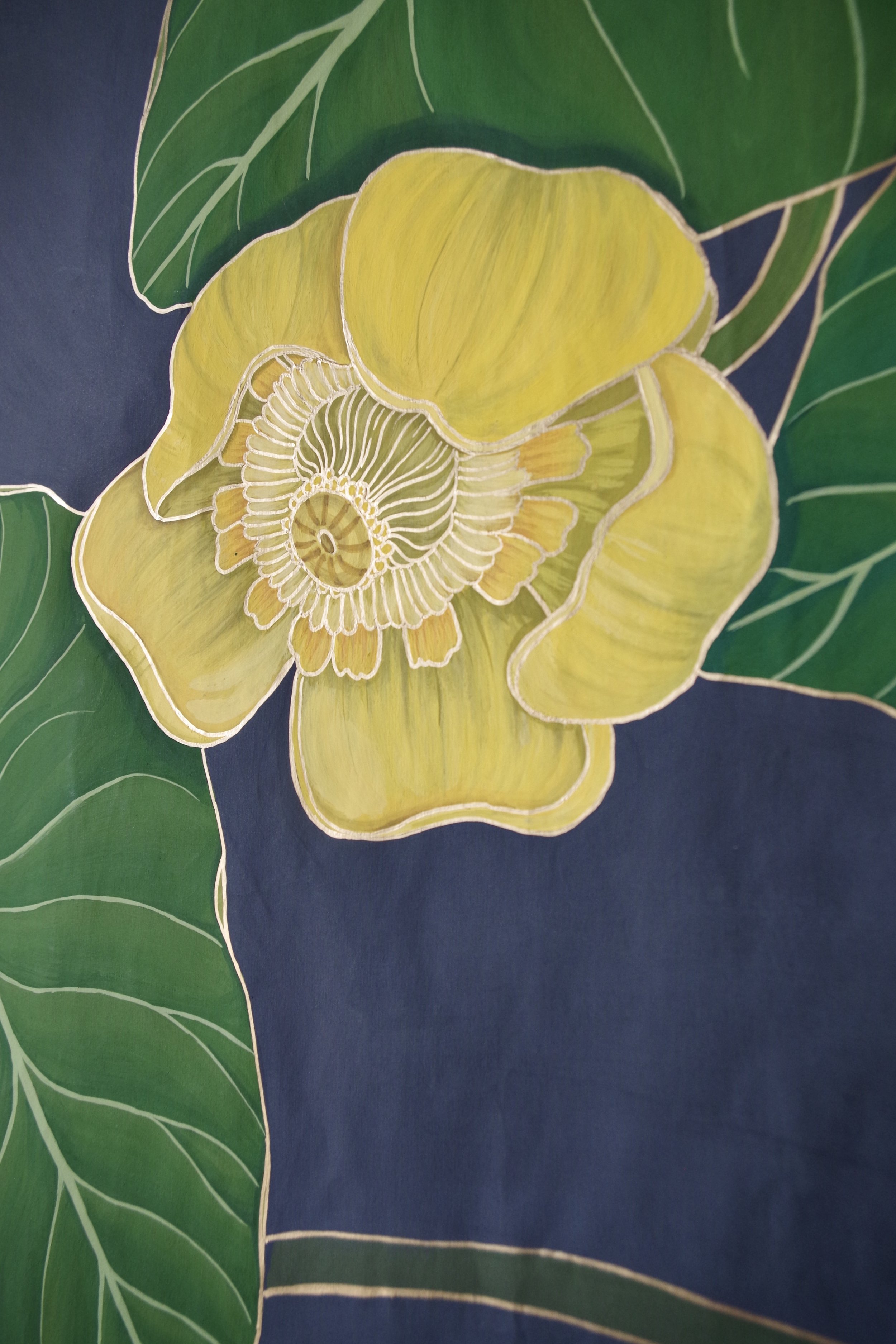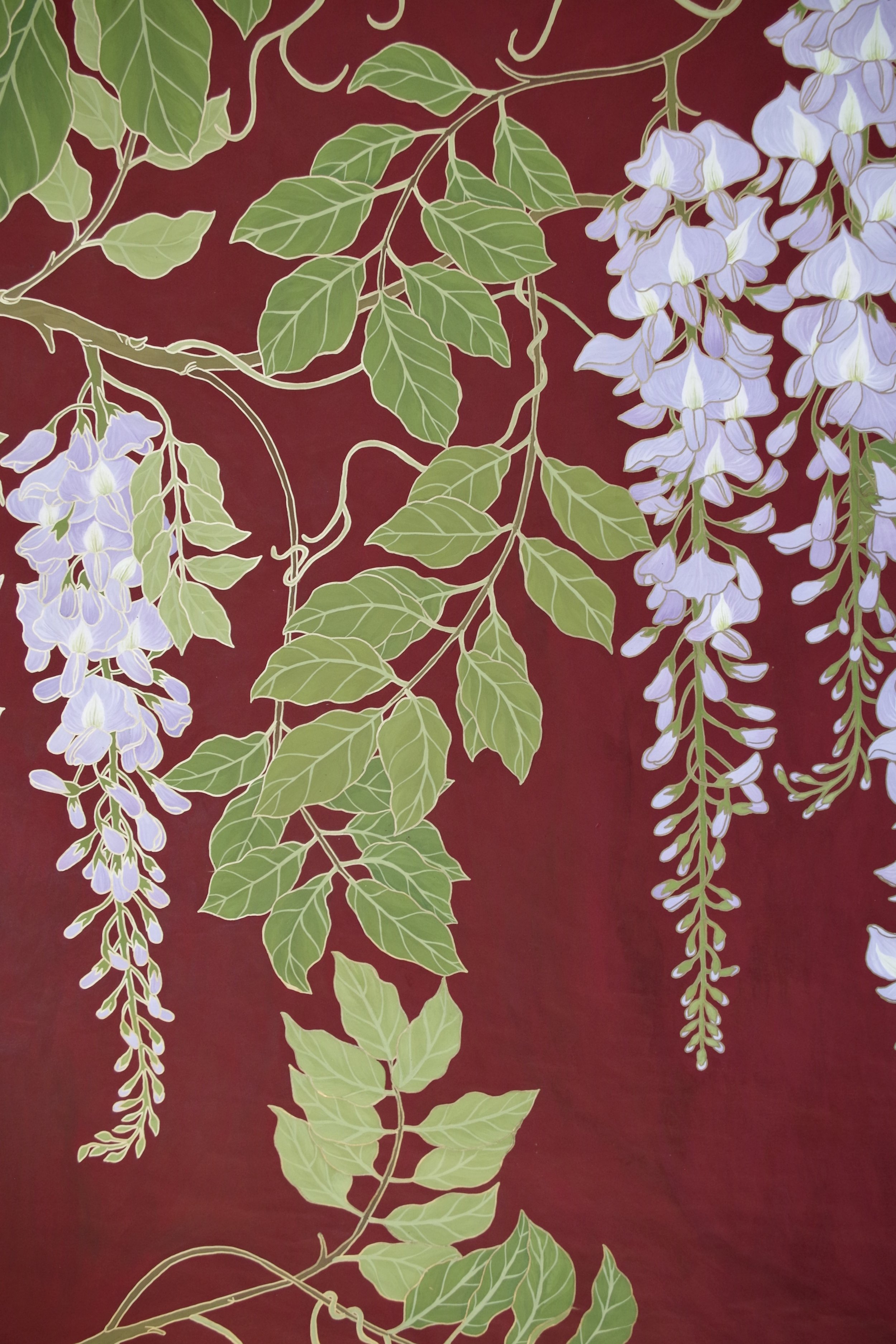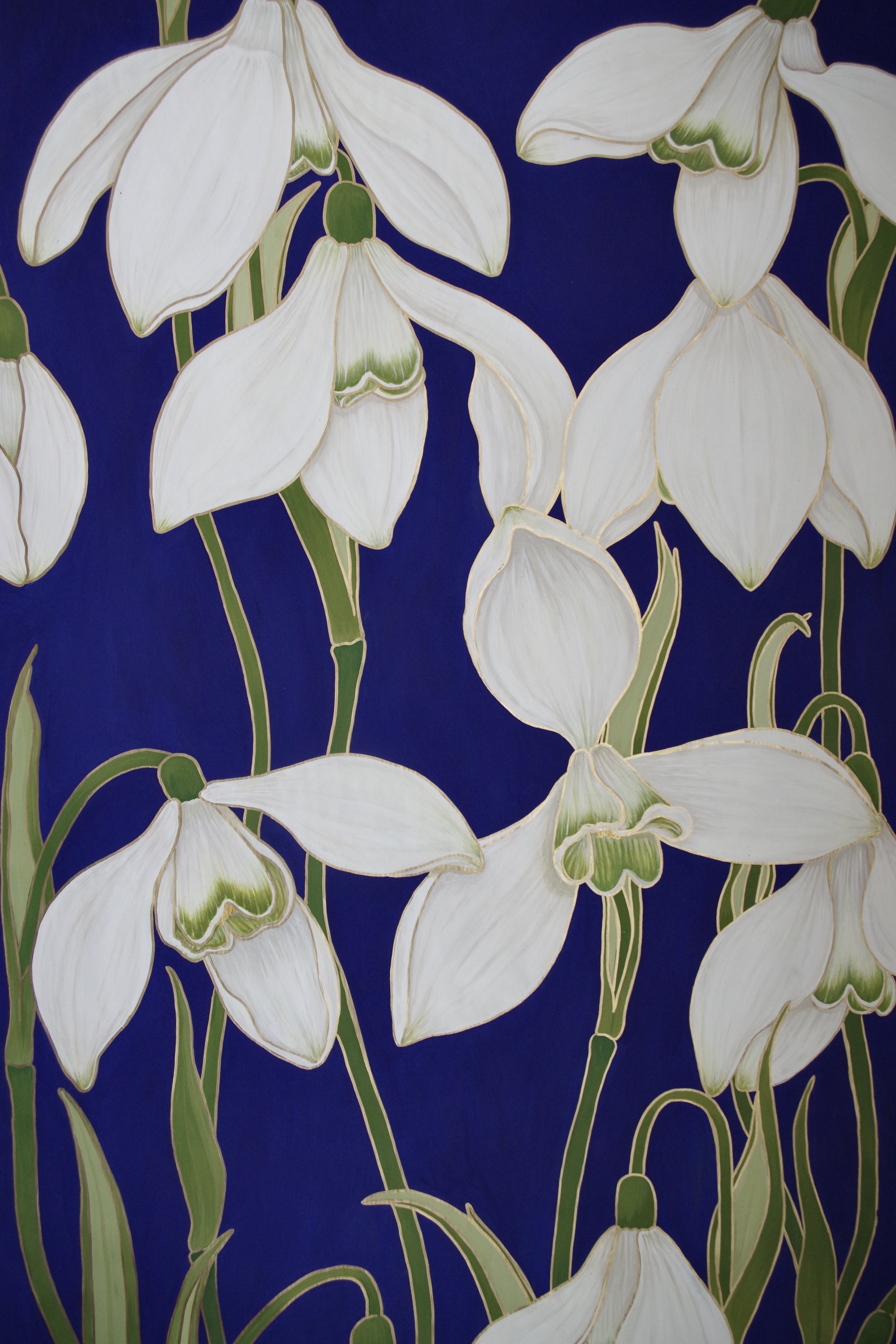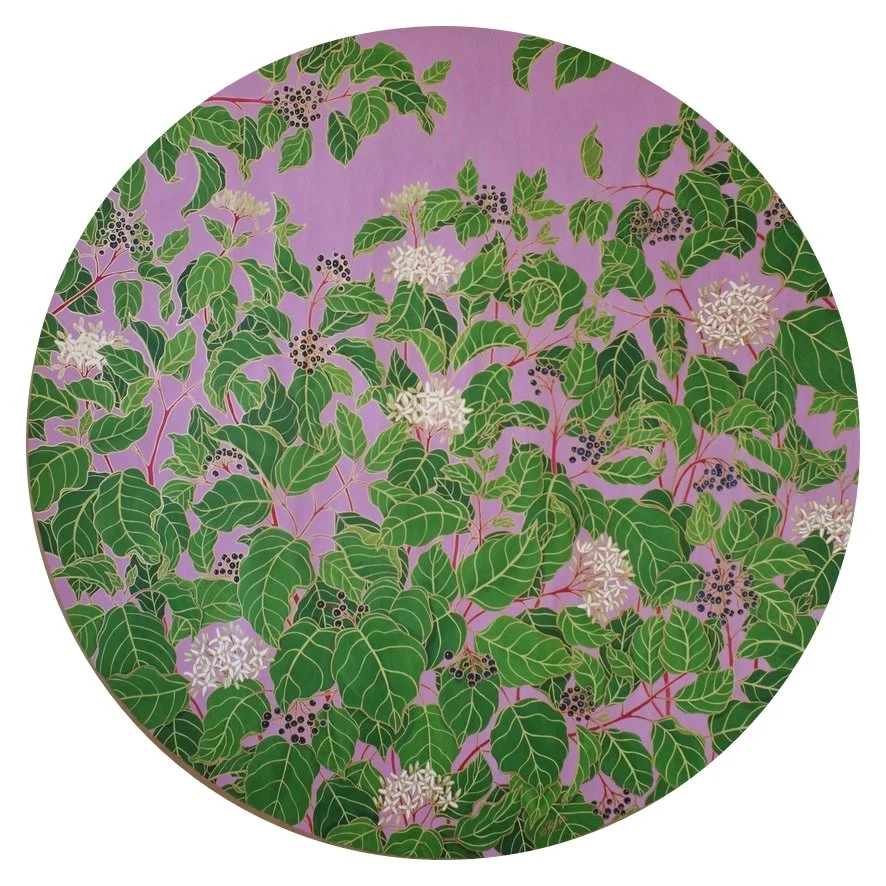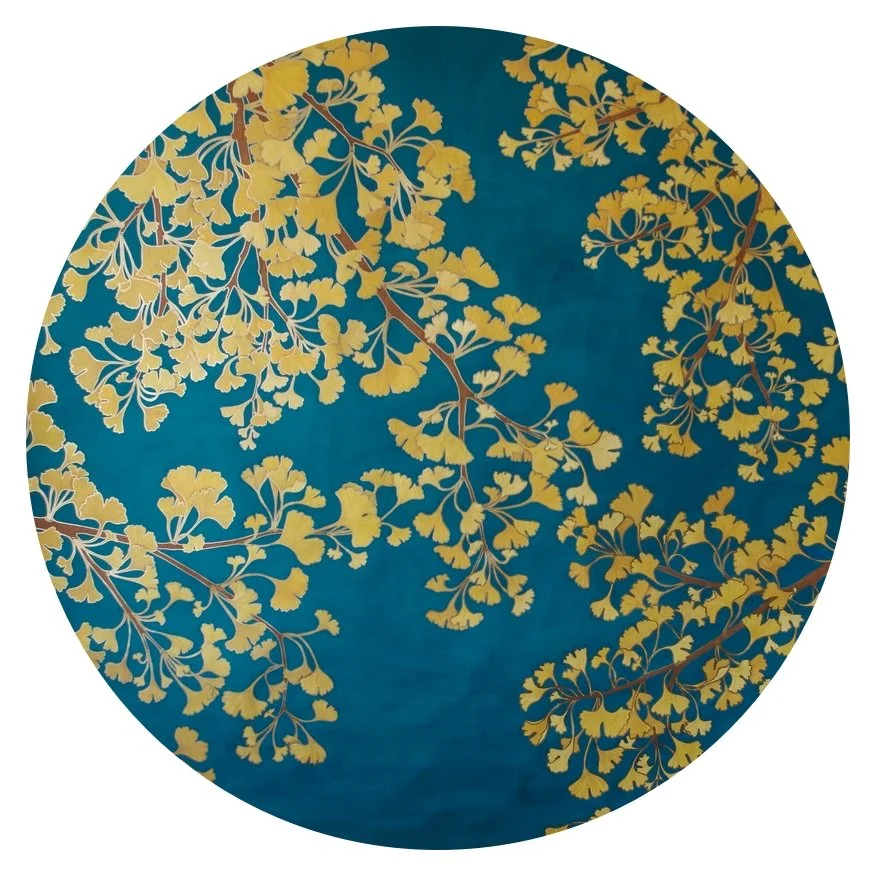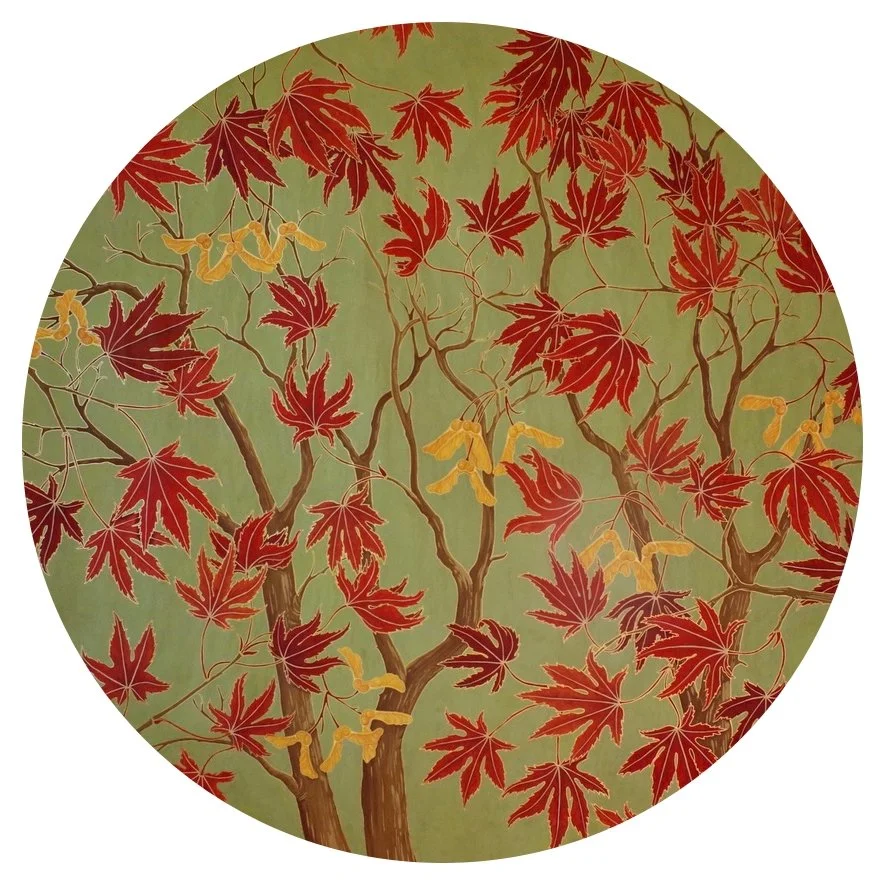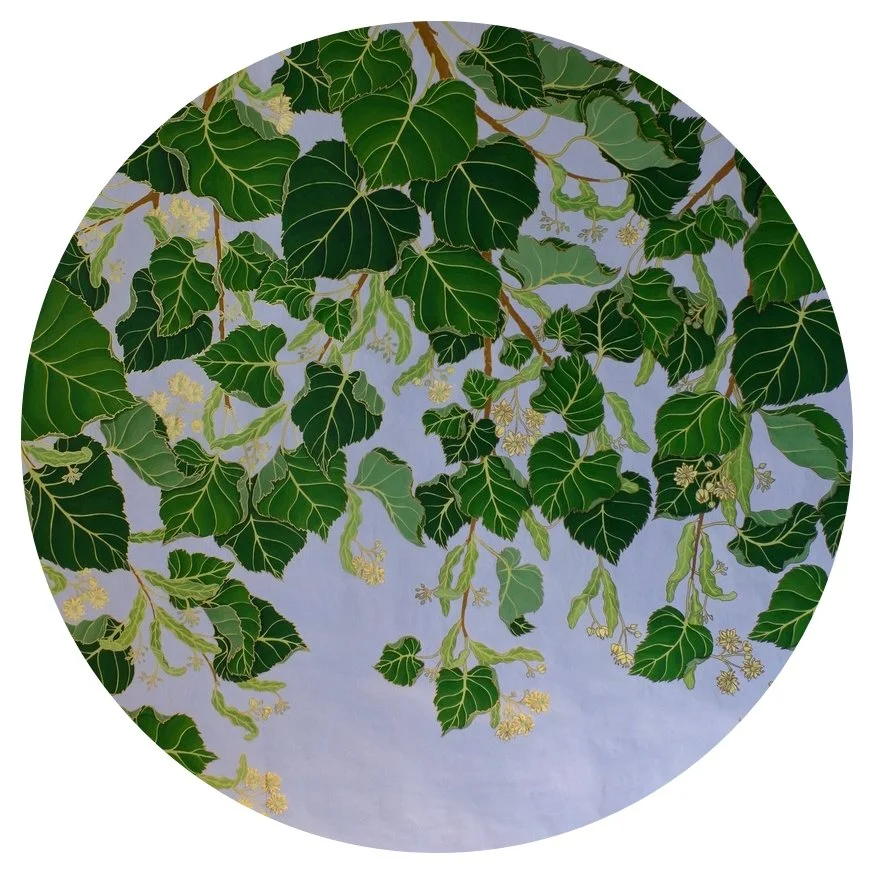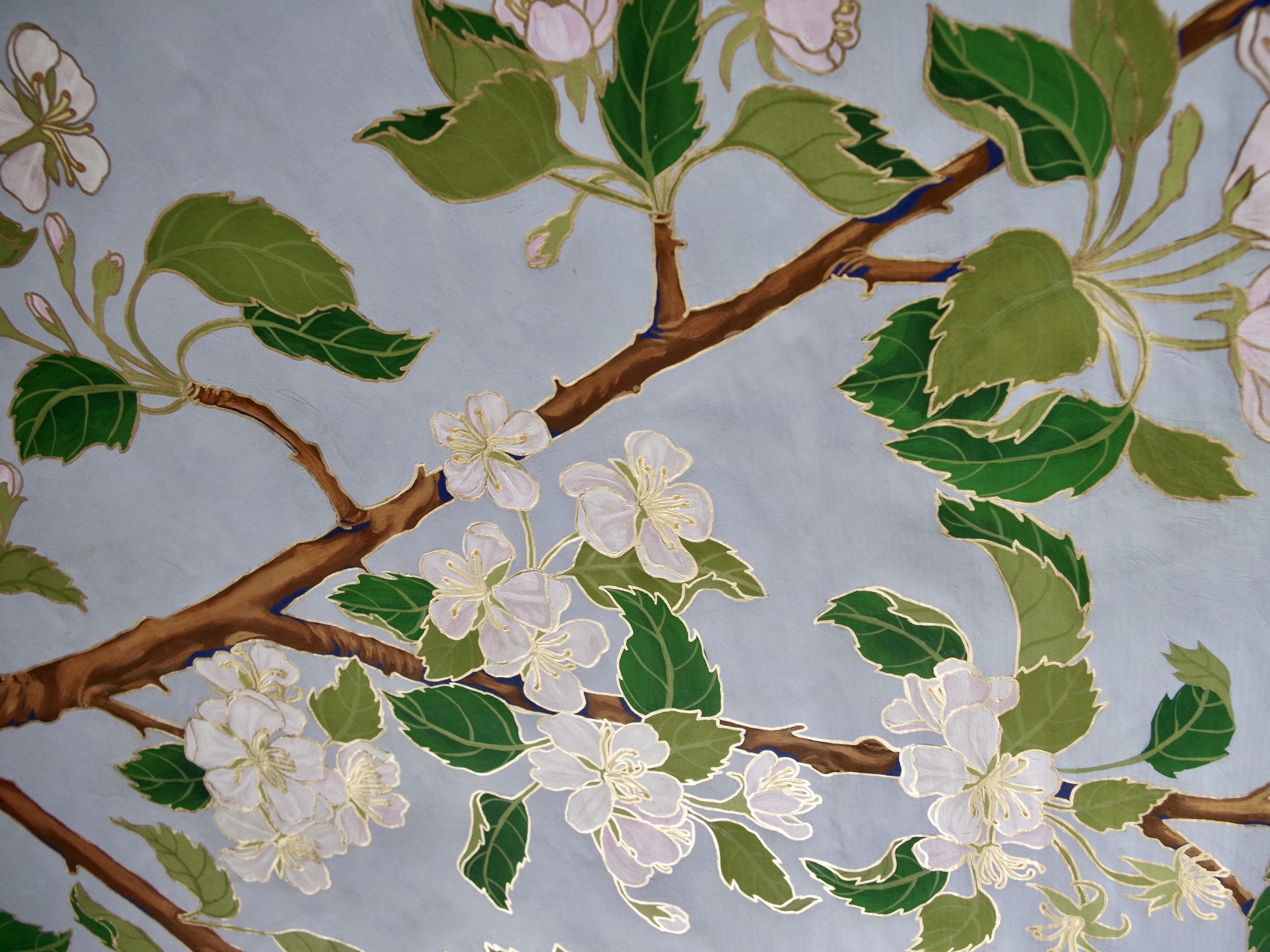
11 paintings for Karma House
boutique hotel in Goscienczyce
About the project:
A series of 11 paintings created for the Karma House boutique hotel. The property is located in east-central Poland, in the heart of a vast botanical garden. Its architecture is modern and minimalistic, with many references to Feng Shui, an ancient Chinese art of arranging space to achieve harmony and balance.
The cycle consists of 10 tondi (Italian term for a round work of art, especially popular during the Renaissance), referring in theirs shape to the circular window crowning the building. The circle has no beginning or end, it symbolises harmony, unity, balance and perfection. Soft, curved lines, without sharp angles, give a sense of continuity and peace, they also announce the cyclical rhythms to which nature is subjected.
The aim of Weronika Anna Rosa's painting cycle was to unite the interior with the surrounding nature, by adding an internal, intimate window to the outside world. The collection is crowned with a vertical painting inspired by snowdrops, heralding the awakening of spring and the rebirth of vegetation after winter dormancy.
Art adviser & art curator: Karolina Kliszewska
Architect & interior designer: Dorota Winiarska
Blooming Lime-tree (diam. 120 cm) - detail
Radiant Dandelions (diam. 120 cm) - detail
About the process:
Each painting, like a portrait, is devoted to one plant only. Rosa made two study visits to Goscienczyce at seasons’ borders, autumn-winter and spring-summer, to get to know the botanical garden and natural landscape. During her stays, she chose plants, collected live samples and made preparatory sketches from nature. The further works took place in her art studio, in Lisbon.
The selection of subjects, paintings’ compositions and theirs colour palette creates an integrated whole, in which the artist refers to four seasons and the balance between Ying and Yang energies.
Preparatory sketches - Ginkgo Biloba
Preparatory sketches - Japanese Maple
Preparatory sketches - Apple Tree
Preparatory sketches - Cornus Sanguinea
Materials & Technique:
The cycle consists of 10 tondi with a diameter of 120 cm and 1 vertical painting (50x145 cm) crowning the whole. To create the paintings, Weronika worked according to techniques inspired by the silk painting and the Japanese woodcuts from Edo period (Ukiyo-e).
The artist used Kraft paper as a canvas - its delicacy allowed to obtain a unique effect and an illusion of paintings made on a precious fabric. She painted with gouaches and golden Japanese ink, which plays delicately with natural light.



